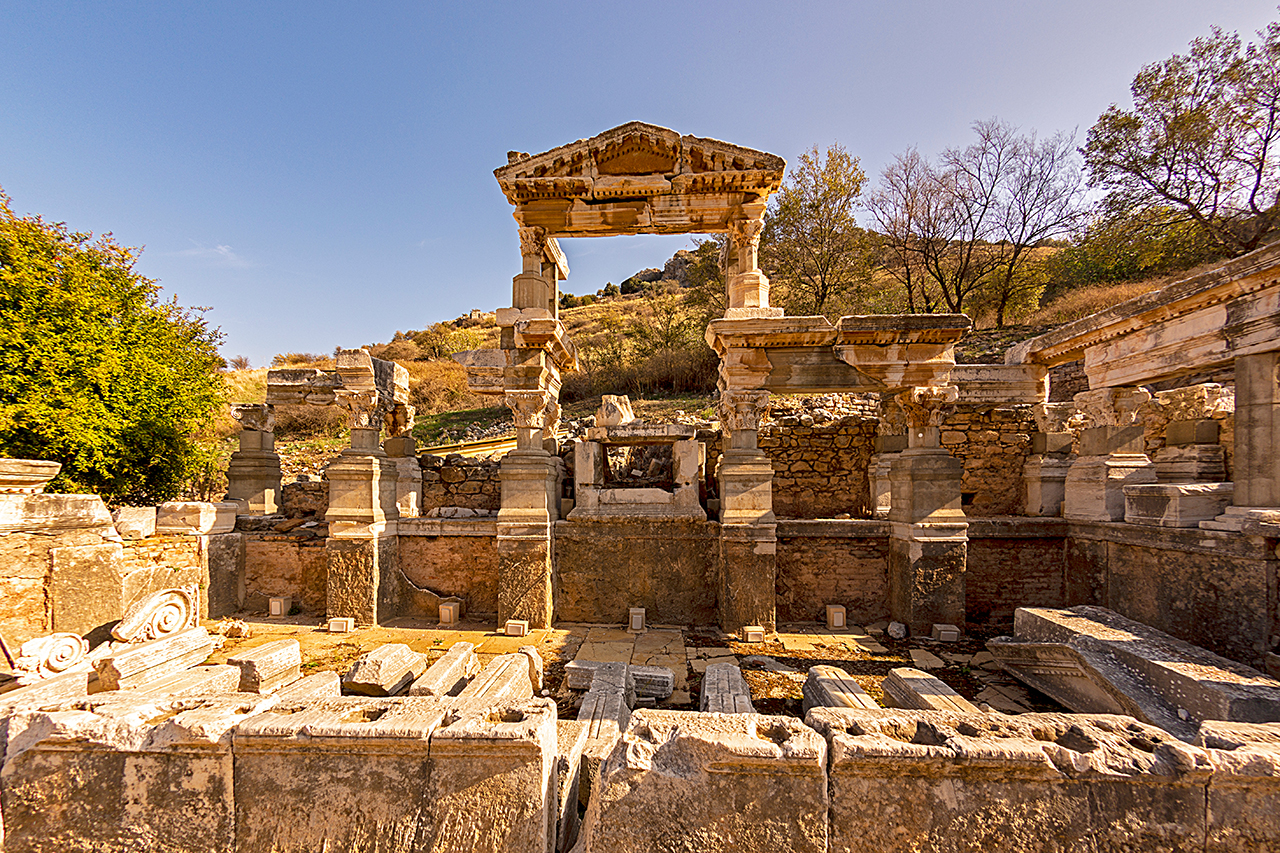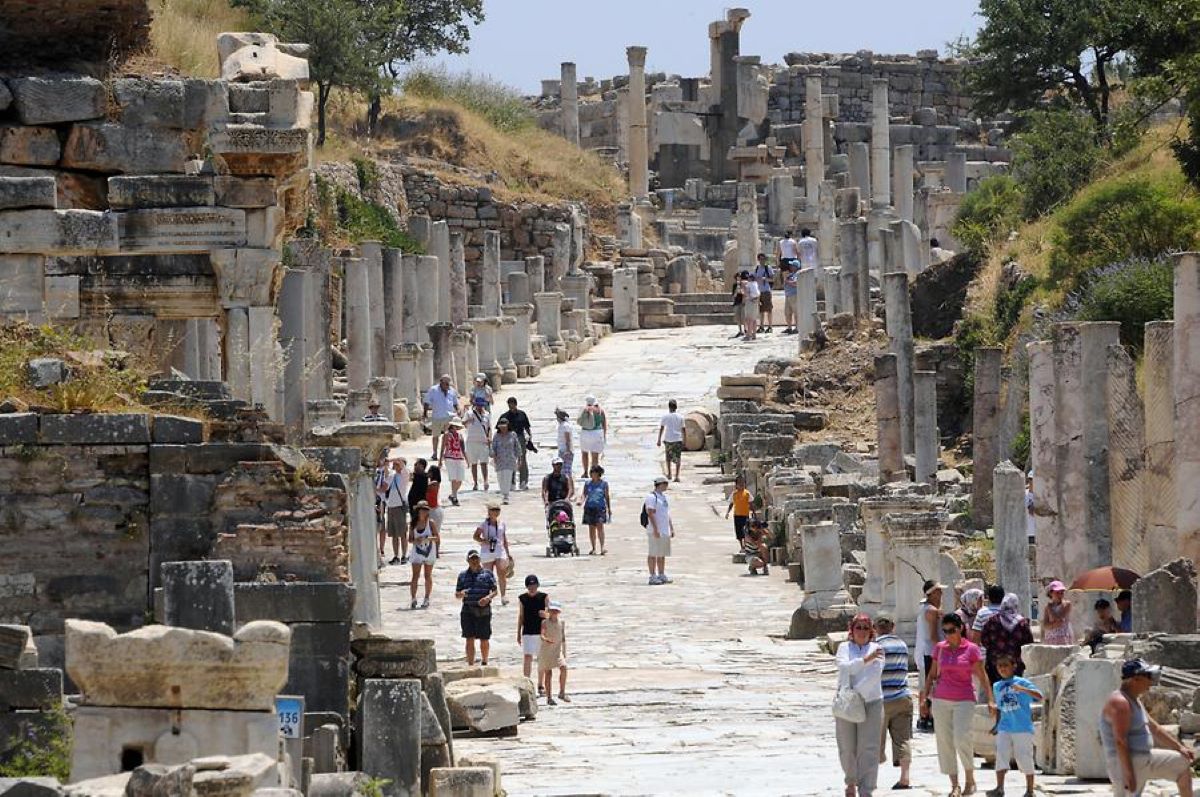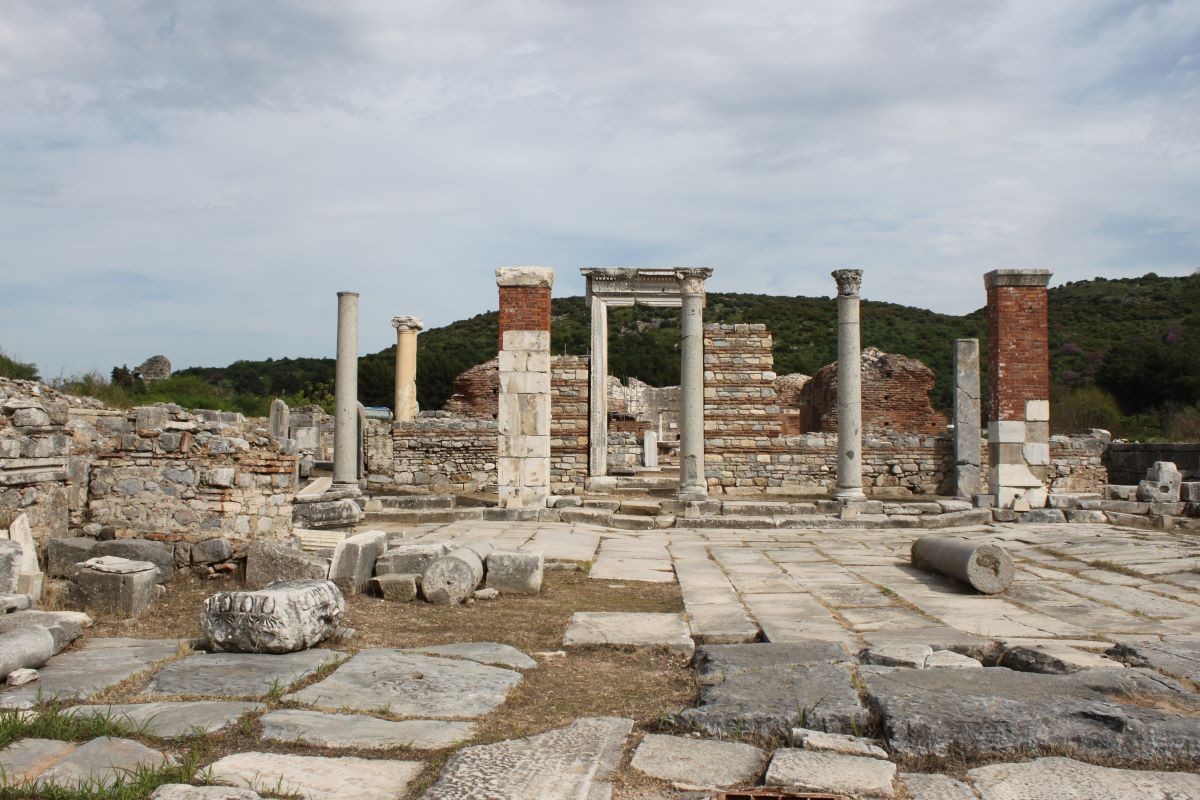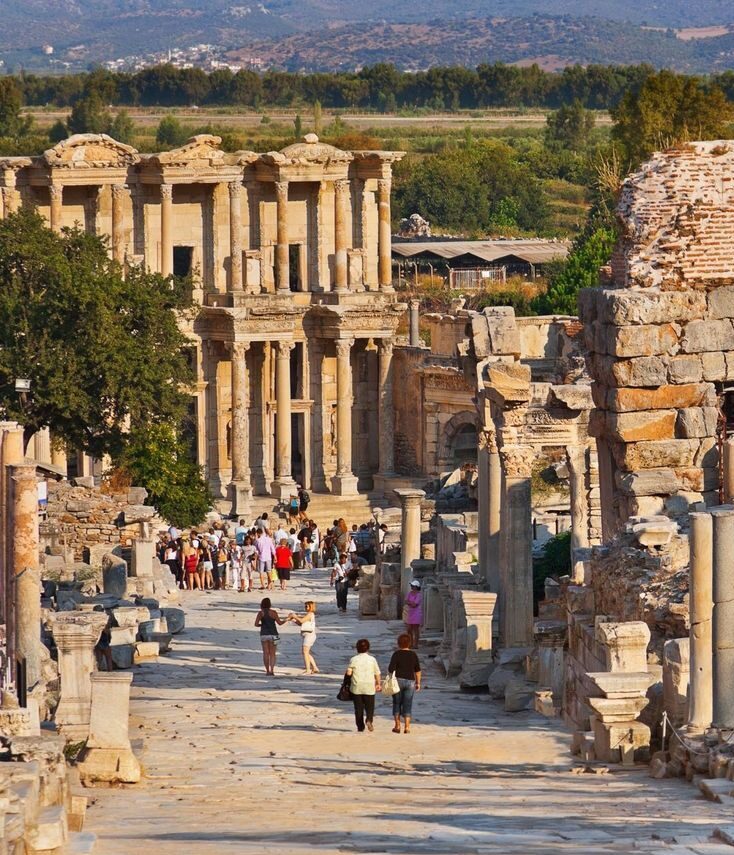The ancient city of Ephesus is a site of remarkable historical significance, with a…

Tracing the History of Ephesus 3: Helenistic and Roman Period
Ephesus is a city of great historical significance. Its past spans centuries and encompasses various empires. The Hellenistic period in Ephesus lasted from the 4th to the 1st centuries BCE, and it was a time of significant change and development for the city. During this period, Ephesus was controlled by various powers, including the Seleucid Empire and the Pergamene Kingdom. However, despite changes in leadership, the city continued to thrive thanks to its strategic location and reputation as a center of learning and culture.
One of the most significant achievements of the Hellenistic period was the establishment of the library of Ephesus. This library was one of the largest in the ancient world, containing over 200,000 scrolls. It was a hub of scholarship and intellectual activity, attracting scholars from all over the Mediterranean world to study and exchange ideas.
The Hellenistic period was also a time of significant artistic and architectural development in Ephesus. The city was adorned with monumental public buildings, including temples, theaters, and gymnasiums, which were decorated with elaborate sculptures and reliefs. The city’s most famous structure from this period is the Temple of Artemis, which was one of the Seven Wonders of the Ancient World.
Ephesus was also an important center of trade and commerce during the Hellenistic period, thanks to its location on the coast of Asia Minor. The city was connected to other important trading centers, such as Alexandria and Antioch, through a network of sea routes. This made it a hub for the exchange of goods, including agricultural products, textiles, and luxury items.The Hellenistic period in Ephesus was a time of great development and growth, setting the stage for the city’s continued importance in the centuries to come.
Late Antiquity, which spanned from the 3rd to the 8th century CE, was a period of significant transition in the Mediterranean world, marked by the decline of the Western Roman Empire and the emergence of new political, social, and cultural formations. The Byzantine Period, which followed the fall of the Western Roman Empire in 476 CE, was characterized by the rise of the Eastern Roman Empire, centered on Constantinople.
In this context, Ephesus played a crucial role as an important center of Christian pilgrimage in Late Antiquity and the Byzantine Period. Emperor Constantine’s decision to make Christianity the official religion of the Roman Empire in the 4th century CE was a momentous event that transformed the religious landscape of the Mediterranean world. As a result, Ephesus, which had been an important commercial center in the ancient world, became a hub of Christian activity.
The city hosted several significant church councils during this period, including the Council of Ephesus in 431 CE, which declared Mary the Mother of God, a pivotal moment in the development of Christian theology. This council reaffirmed the doctrine of the Trinity and established the concept of Christ as both fully human and fully divine. The council was attended by over 200 bishops, who debated and defined key elements of Christian belief.
Despite the decline of the Roman Empire in the 5th and 6th centuries CE, Ephesus continued to be an important center of Byzantine culture. The city was the site of several important monasteries and churches, including the Basilica of St. John, built in the 6th century CE. The Basilica, which was one of the largest churches in the world at the time, was believed to house the tomb of St. John the Evangelist, one of the 12 apostles of Jesus Christ.
Ephesus was also home to the Church of Mary, a Byzantine-era church that was dedicated to the Virgin Mary. The church, which was built in the 6th century CE, was an important pilgrimage site for Christians and was believed to be the site where the Third Ecumenical Council was held in 431 CE.
In addition to its religious significance, Ephesus was also a center of trade and commerce in the Byzantine Period. The city was strategically located on the Aegean coast, and its port was an important hub for the export of goods such as textiles, ceramics, and spices.
The Roman period in Ephesus began in 133 BCE when the city was incorporated into the Roman Republic. The city became an important center of trade and commerce, and its prosperity continued to grow under Roman rule. During this period, the city underwent significant urban development, with the construction of new public buildings and infrastructure.
One of the most significant Roman-era constructions in Ephesus was the Library of Celsus, built-in 117 CE. It was an impressive two-story building that contained over 12,000 scrolls and was a symbol of the city’s intellectual and cultural life. The Roman period also saw the construction of the famous Great Theater, which had a capacity of over 25,000 people and was one of the largest theaters in the ancient world.
Under Roman rule, Ephesus also became an important religious center. The Temple of Artemis, which had been damaged during the Hellenistic period, was rebuilt and became a popular site of pilgrimage. The city was also home to one of the largest and most impressive Roman-era libraries, which attracted scholars from all over the world. Ephesus continued to prosper during the Roman Empire, and by the 2nd century CE, it had become one of the largest cities in the Mediterranean world, with a population of over 250,000 people.
Another significant event during the Roman period was the arrival of the apostle Paul, who visited Ephesus in the mid-1st century CE and spent several years there, spreading Christianity. The city became an important center of early Christianity, and several important Christian figures, including the apostle John and the Virgin Mary, were said to have lived in the area. Ephesus also played a significant role in the early development of Christian theology. The Ecumenical Council of Ephesus, held in the city in 431 CE, was a pivotal event in the history of Christianity, as it helped to define the doctrine of the Trinity.
However, like most cities in the Roman Empire, Ephesus was not immune to political and social upheaval. In the 3rd century CE, the city was hit by a major earthquake that caused significant damage to its buildings and infrastructure. However, the city was quickly rebuilt and continued to flourish.




This Post Has 0 Comments